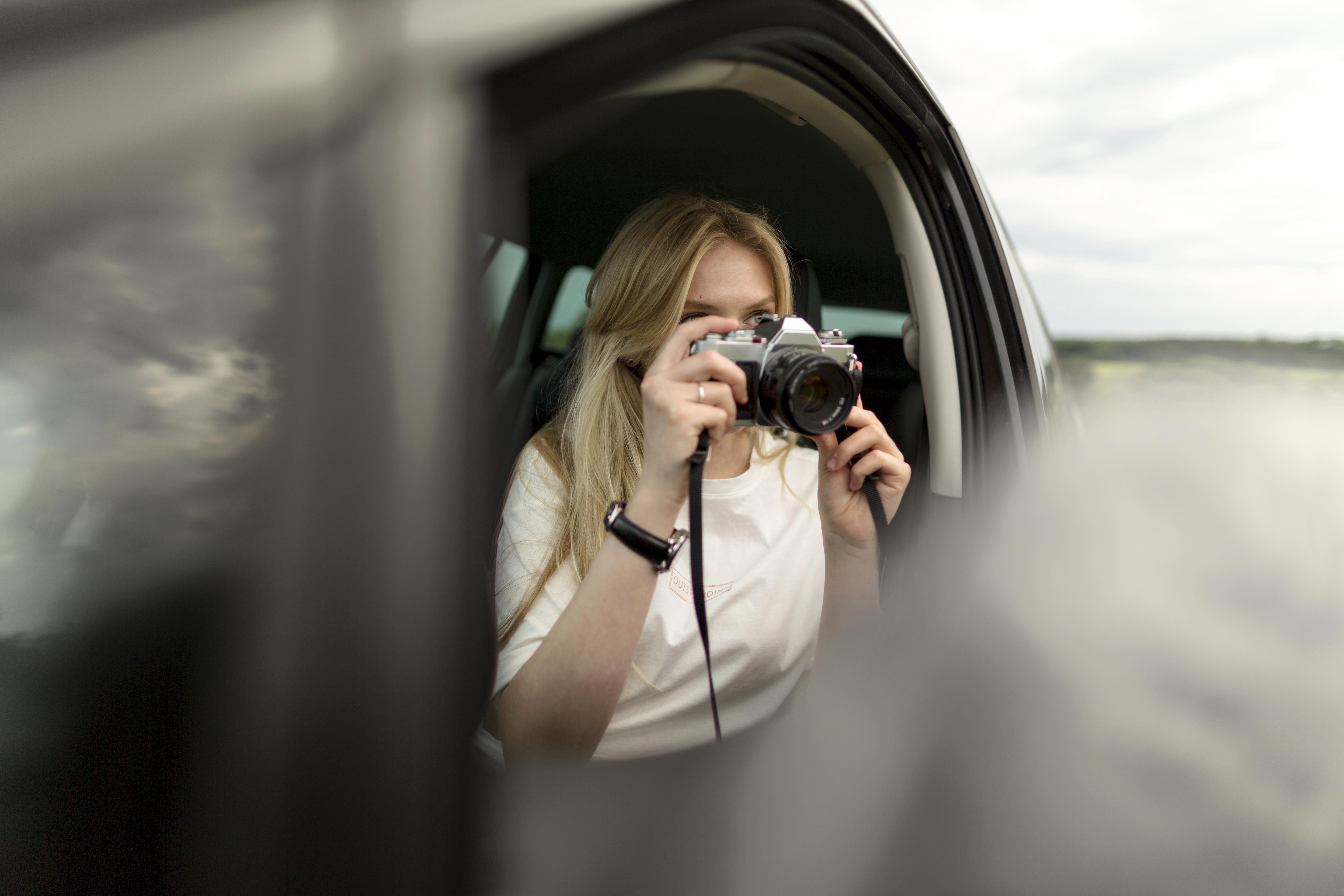.png)
Used Cars, Studio Quality: Why High-End Visuals Drive More Sales
Used Cars, Studio Quality: Why High-End Visuals Drive More Sales
Introduction: More Than Just a Picture
Imagine this: you’re on your phone, scrolling through dozens of used car listings. Most of them look… fine. A bit dull, sometimes blurry, sometimes photographed in what looks like a dim parking lot. Then suddenly, one listing catches your eye. Same kind of car, similar price, but the photos feel different. The car looks like it belongs in a showroom crisp, bright, almost like you could step into the frame and take the wheel. You stop scrolling. You click. You imagine yourself driving it.
That single pause that click is the moment high-quality visuals change everything. And in today’s digital-first world, that moment is the line between a car that sits on the listing page for weeks and one that sells in days.
I’ve been around enough sellers to know this truth: people don’t buy cars online because of specs alone. They buy the story the photos tell.
Why Visuals Rule in Car Sales
The First Impression Effect
We’ve all heard the saying: you never get a second chance to make a first impression. In used car sales, this couldn’t be more accurate. When potential buyers browse online, they make snap judgments in seconds. A slightly blurry shot or a distracting background doesn’t just look “unprofessional” it signals doubt. Doubt about how well the car’s been cared for, doubt about the seller’s seriousness, doubt about whether it’s worth reaching out.
On the flip side, studio-quality images can flip that script instantly. A clean background, well-lit details, sharp focus suddenly the same car feels newer, better, more trustworthy. In fact, data shows that listings with professional-quality photos get significantly more clicks and hold viewers’ attention longer. It’s not just aesthetics; it’s psychology.
Building Trust Before the First Handshake
Trust is one of the hardest currencies in the used car market. Buyers don’t have a warranty to lean on. They don’t know you, and they don’t know if that “well-maintained” promise in the description is real. Photos become the bridge.
Think about it: a seller who invests in high-quality images unconsciously tells the buyer, I care about this car. I want you to see every detail because I have nothing to hide. That alone makes it easier for the buyer to believe the story behind the listing. And in markets where skepticism is high, trust isn’t just nice to have it’s the dealmaker.
What “Studio Quality” Really Means in 2025
Here’s the thing: when people hear “studio-quality,” they imagine huge light rigs, professional cameras, and expensive rental studios. That used to be true. Today, it’s not.
“Studio quality” in a digital age means consistency, clarity, and focus. It means photos where the background doesn’t distract, the lighting feels natural, and the details of the car the shine of the paint, the stitching of the seats, the curve of the headlights are front and center.

And this is where AI has completely reshaped the game. Sellers no longer need to haul cars into a white-walled studio or hire photographers at scale. With tools like Car Studio AI’s editing suite, you can remove a messy background, replace it with a professional showroom setting, add realistic shadows, and even highlight specific features in minutes.
I’ll be honest: I once tried photographing my own car in a supermarket parking lot. The light was harsh, there were other cars in the frame, and no matter how many times I repositioned, the photos just looked… flat. With AI editing tools, that same shoot could’ve been transformed into something that looked like it came out of a glossy catalog. And that’s the beauty of it you don’t need a studio anymore to achieve “studio quality.”
The AI Toolbox for Used Car Sellers
Let’s be honest: not every seller has the time (or patience) to master photography. That’s where AI becomes the ultimate assistant. Instead of juggling cameras, lights, and editing software, sellers can now get professional-level results with just a few clicks.
Background Removal & Replacement
Ever taken what you thought was a great car photo, only to realize there’s a trash bin, another car, or worse a stranger lurking in the background? AI solves this instantly. Tools like Car Studio AI can detect the car, cut it out cleanly, and drop it into a polished environment: a neutral studio, a luxury garage, even an urban night scene. Suddenly, the car doesn’t look like it’s parked in your driveway it looks like it belongs in a showroom.
Subtle Retouching That Makes a Big Difference
We’re not talking about Photoshop-level fakery. AI detailing is about enhancement, not deception. Think of it as giving the car the attention it deserves: sharpening the chrome details, making sure the color pops in natural light, adjusting shadows so the lines of the car feel three-dimensional. These subtle tweaks make the image more honest, not less, because they let the buyer see the car clearly, without distractions.
I remember a dealer telling me: “It used to take me hours to clean up shots. Now, AI fixes it in minutes. I can focus on actually selling cars instead of playing photographer.” That’s the point efficiency without compromise.
Highlighting Logos & Features
Sometimes, it’s the little details that seal the deal. A brand logo placed tastefully, or a highlighted feature like heated seats or panoramic roof these tell buyers why this car matters. AI allows you to emphasize what sets each vehicle apart. In a crowded listing environment, those details are the hooks.
Beyond Photos: The 360° Revolution
Static images are powerful. But what if buyers could virtually “walk around” your car from home? That’s where 360° photography steps in and it’s no longer reserved for luxury brands.
With apps like Car Studio AI’s 360-car photography tool, sellers can create immersive, interactive tours. A buyer can spin the car around, zoom in, peek inside. It’s like visiting the dealership without leaving the couch.
Why does this matter? Transparency. When buyers can see every angle, they feel more confident. No hidden scratches, no mystery dents. It reduces hesitation and builds trust. And trust, again, is the currency that moves cars faster.
Personally, the first time I tried a 360° car viewer, I caught myself spending way more time exploring a listing I wasn’t even seriously considering. That’s the power of interactivity: it makes people linger, and the longer they linger, the closer they get to sending that “Is this still available?” message.
The Psychology of Buyer Trust
Here’s a simple truth: buying a used car online is a leap of faith. Photos are the only bridge between buyer and seller. And human psychology responds in predictable ways.

Think about it: if you were choosing between two sellers one with dim, cropped shots, another with polished, consistent visuals who would you trust more? Exactly.
One seller I spoke with compared it to online dating: “It’s like profile pictures. If they’re blurry, people swipe left. If they’re clear, you get a message.” Selling cars isn’t dating, but the principle is the same photos are the silent sales pitch that work before you ever speak to the buyer.
The Business Case for Professional AI Car Photography
Let’s strip it down to numbers and outcomes for a moment. Photos aren’t just about “looking good” they directly affect sales metrics.
Competitive Advantage
The online used car market is saturated. Hundreds of nearly identical listings compete for the same buyers. In that crowded space, visuals are the differentiator. Sellers who use studio-quality images consistently report higher click-through rates (CTR) and faster time-to-sale. It’s the difference between a buyer scrolling past and a buyer clicking your listing.
I once saw a small dealership test this head-to-head. They posted half their cars with standard phone photos and the other half enhanced with AI tools. The enhanced ones got nearly double the inquiries in the first week. Same cars, same prices the only difference was the perception of quality.
Cost-Effectiveness
Hiring photographers, renting studios, reshooting cars every time the weather shifts all of that is expensive. AI doesn’t just improve quality; it slashes costs.
It’s the classic “work smarter, not harder” equation.
Scalability
For a dealer with five cars, taking nice photos might be manageable. For one with 500, it’s a nightmare unless you use AI. Tools that process entire batches of photos with consistent quality let dealerships scale their presentation without losing control.
Think of it like branding. A strong brand doesn’t happen by accident; it’s repeated, consistent cues that tell customers what to expect. Consistency in your photos works the same way.

The Future of AI in Car Photography
If AI can already replace backgrounds, enhance details, and create 360° tours… what’s next?
It’s not science fiction these shifts are already underway. And sellers who adopt early get the edge, just like early adopters of online listings did years ago.
Conclusion: The Silent Salesperson
In the competitive world of used car sales, every image is a salesperson. The better that salesperson looks and speaks (through visuals), the more buyers listen. Studio-quality photography, supercharged by AI, isn’t just an upgrade. It’s a necessity.
Cars with polished, consistent, and immersive visuals sell faster. Sellers build trust without saying a word. Buyers feel safer investing their money.
And the best part? You no longer need a warehouse studio or a photography degree to achieve it. You just need the right tools and the willingness to let visuals do their job.
So next time you’re preparing a listing, ask yourself: Do these photos make someone stop scrolling? If the answer is no, then it’s worth investing in making them better.
FAQ
What is AI-powered car photography?
AI-powered car photography is the use of artificial intelligence to automatically enhance and optimize images of vehicles. Instead of relying solely on manual editing or expensive studio setups, AI can process photos in seconds, identifying the car, isolating it from cluttered backgrounds, and applying professional adjustments. For example, AI can remove a messy garage backdrop and replace it with a clean, showroom-style environment. It can also add realistic shadows, balance lighting, sharpen the paint reflections, and even emphasize small details like chrome trims or wheel designs. The goal isn’t to deceive buyers, but to present the car clearly and consistently as if every photo came from a professional studio, without the cost and effort.
How does high-quality imagery impact online car sales?
High-quality imagery directly influences buyer behavior. Think about how you shop online: would you trust a product listing with dim, blurry photos? Cars are no different. Clear, detailed photos increase engagement because they invite buyers to imagine themselves owning the car. Multiple studies show that listings with better visuals get more views, longer time spent on page, and higher inquiry rates. A potential buyer might spend an extra minute zooming into the stitching on the seats or admiring the shine on the paint and those extra moments increase the likelihood of reaching out. On the flip side, low-quality photos don’t just fail to attract; they can actively repel buyers, even if the car itself is mechanically excellent and well-priced. In short: photos are not decoration, they are conversion tools.
Can AI enhancements replace professional photographers?
Not entirely and that’s a good thing. Professional photographers bring artistry, composition, and human intuition. They know how to capture a car’s “character,” the angle that makes it stand out. AI, on the other hand, excels at speed, consistency, and scalability. Think of it as a partnership: a photographer captures the raw image beautifully, and AI ensures that every image meets the same professional standard, even across hundreds of listings. For smaller sellers or dealerships without in-house photographers, AI can act as a stand-alone solution, leveling the playing field. But even the best AI tool benefits from human creativity because buyers respond not only to clarity, but also to personality in the shot.
Does AI editing hide imperfections?
Good AI tools shouldn’t be about covering flaws; they’re about presenting reality in the clearest way possible. Instead of hiding scratches, dents, or signs of wear, AI enhances lighting and focus so buyers can actually see those details more clearly. This might sound counterintuitive why emphasize flaws? But in used car sales, transparency is a powerful trust builder. Buyers expect wear on a 10-year-old car; what they don’t expect is surprises after they’ve traveled to view it. By showing imperfections honestly, polished through clean, consistent photos, you reassure buyers that you’re credible. The result: fewer wasted inquiries and more serious, ready-to-buy customers.
Are there dealership-specific tools for managing listings?
Yes and they’re becoming more sophisticated every year. Platforms like Car Studio AI are designed with dealerships in mind, offering features that go far beyond single-photo editing. Dealers can bulk process hundreds of car images, apply consistent backgrounds across their entire inventory, and even create 360° interactive tours. This means a dealer doesn’t just save time; they also build a unified brand identity. Instead of listings looking like a patchwork of different styles and qualities, every car feels like it belongs to the same professional ecosystem. For dealerships competing on online marketplaces, that uniform presentation becomes a competitive advantage.
How important is consistency across listings?
Consistency is everything. Imagine browsing through a dealer’s page: one car is photographed under harsh sunlight, another at night with a yellow streetlamp, another inside a cluttered garage. Even if the cars are excellent, the inconsistency creates an impression of disorder and buyers often associate that with unreliability. Now imagine the same cars, all shown against a clean, uniform background, with similar lighting and framing. The message is instant: this dealer is professional, reliable, and organized. Consistency removes friction from the buyer’s decision process. Instead of questioning the seller’s professionalism, buyers focus on what matters: the car itself.
What about older cars or cars with visible flaws?
Interestingly, older cars or those with visible wear often benefit the most from AI-powered enhancements. A 2008 sedan with faded paint can still look respectable if it’s photographed and presented cleanly. High-quality images frame imperfections as natural signs of use rather than suspicious blemishes. Buyers shopping for older vehicles know they won’t get perfection but they do want honesty. By presenting flaws in clear, consistent photos, you shift the narrative from “this car has problems” to “this car has history, and here it is, transparently.” That builds credibility and often accelerates the sales process, because serious buyers appreciate the openness.
Will AI car photography keep evolving?
Absolutely and we’re only at the beginning. The first wave of AI focused on background swaps and basic enhancements. Today, we already see tools creating 360° car tours, interactive showrooms, and augmented reality previews. In the near future, AI might personalize listings based on buyer profiles: performance enthusiasts see close-ups of exhausts and speedometers, families see trunk space and safety features. Further down the line, we could see virtual test drives powered by AI and VR, where buyers “sit” in the car from their living room. The technology is advancing quickly, and what feels futuristic now may soon be standard. Sellers who adopt early not only benefit now, but also position themselves ahead of the curve as buyer expectations evolve.
